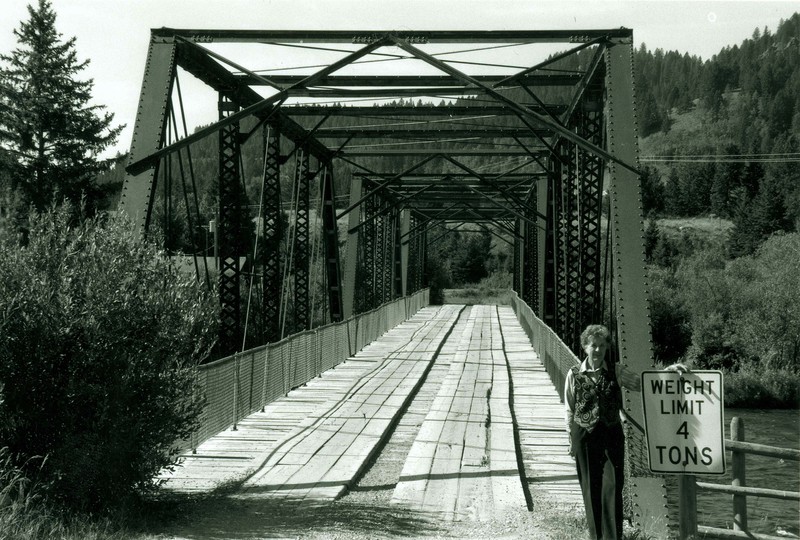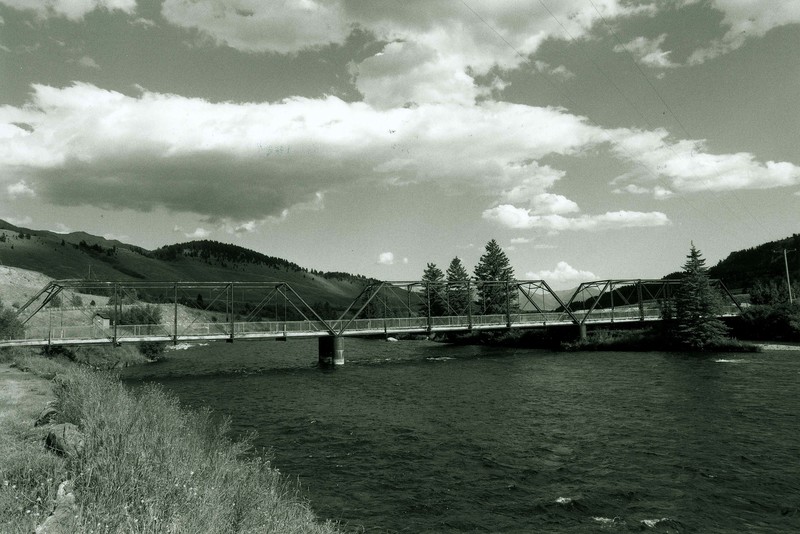Hutchins Bridge

Madison County commissioners began discussing the feasibility of a road along the Madison River in 1869. When Congress designated Yellowstone a National Park in 1872, the area was accessible only on horseback. It was not until a year later that the first good wagon road to the Park was constructed along this route. Mathew Dunham built a wooden toll bridge across the river here in 1885 but soon sold it to rancher I. A. Hutchins, who continued to collect tolls. In 1900, Madison County purchased the bridge with a right-of-way through Hutchins’ ranch for $300. Portions of the bridge collapsed when a herd of cattle crossed and it was no longer used. In 1902, John Towle of Omaha, whose builder’s plaque is mounted on the bridge’s southeast hip, constructed this steel bridge for Madison County at a cost of $5,999. By 1917, the Hutchins Bridge was part of the Banff to Grand Canyon Road known as the Red and White Trail for the colors of its signs. The West Yellowstone to Butte portion was known as the Vigilante Trail. A new route to the park in 1922 bypassed the Hutchins Bridge, and it has since served local traffic. The bridge is significant as an example of a pin-connected Pratt through truss, a prefabricated design that was the most common form of metal truss bridge until about 1920.
Images


